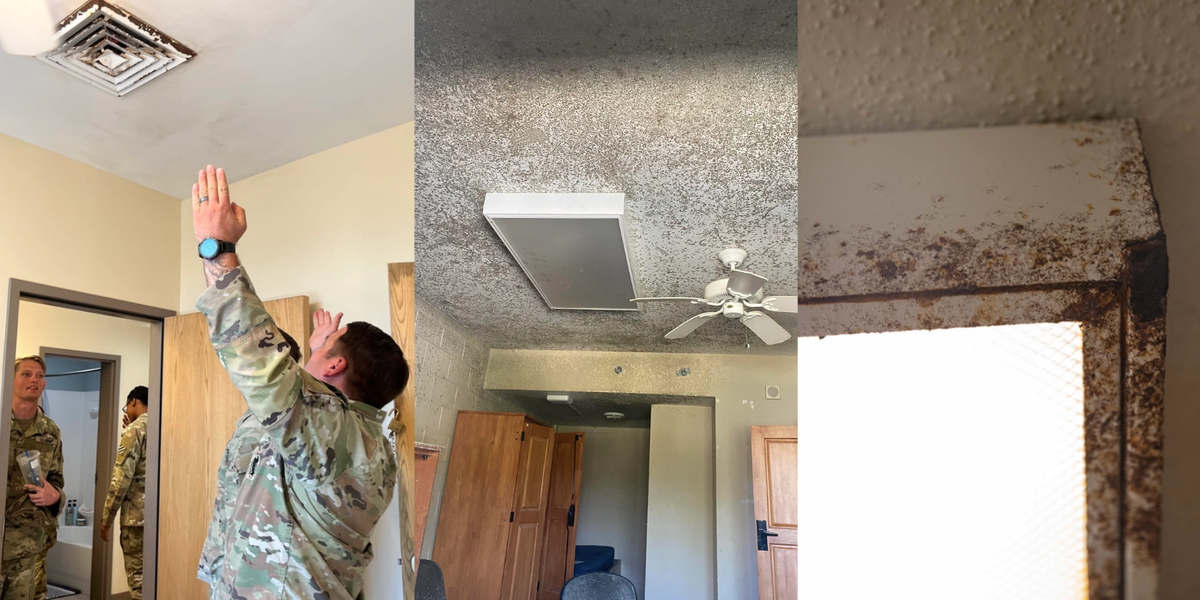SECDEF LAUNCHES $1B TASK FORCE FOR MILITARY BARRACKS

A 2023 Government Accountability Office (GAO) report revealed alarming conditions in some U.S. military housing units, especially for unaccompanied service members. The report detailed issues such as raw sewage leaks, mold and rodent infestations, and broken fire safety systems, warning that “poor living conditions undermine quality of life and readiness.”
DoD $1B Task Force for Military Barracks
During a speech to new military recruits at Naval Air Station Oceana in Virginia, Defense Secretary Pete Hegseth announced the creation of a new “barracks task force” to improve living conditions for U.S. service members.
“We are going to fix the barracks issue across all of our services, because two years ago, the Government Accountability Office released a report that said, quote, ‘poor living conditions undermine quality of life and readiness,'” Hegseth said, referring to the GAO report.
“It is simply unacceptable that in some cases, our warriors continue to live in substandard housing,” Hegseth said. “Every war fighter of our joint force deserves housing that is clean, comfortable, and safe.”
Private industry is also expected to play a key role in new construction and renovation projects.
DoD Funding Reallocation to Border Control
Some Democrats in Congress pushed back against the Trump administration's decision to divert approximately $1 billion, originally allocated for Army barracks renovations, to fund the surge of troops at the southern border earlier this year.
This move was part of an effort to crack down on illegal immigration.
Legislation Securing $1B for Military Barracks
In early July, the One Big Beautiful Bill Act was signed into law, providing the Department of Defense (DoD) with an initial investment to address the long-overdue maintenance and upgrades needed for military barracks.
This includes $230 million for the Marine Corps Barracks 2030 initiative, $425 million for enlisted boot camp barracks and related facilities, and $1 billion for the Army, Navy, Air Force, and Space Force to sustain, restore, and modernize military unaccompanied housing.
How Does the Task Force Work?
The Barracks Task Force, as outlined in a DoD memo, will be headed by the Assistant Secretary of War for Energy, Installations, and Environment.
Within 30 days, the team is required to produce an initial barracks plan. This plan will identify investment opportunities and establish department-wide policies for barracks standards, with a focus on prioritizing air and water quality for service members.
Private industry is expected to be a significant contributor to new construction plans and projects initiated by the Task Force.

Adequate Housing Needs for Military Personnel
The creation of the Barracks Task Force and the passage of the One Big Beautiful Bill Act signal a federal push to improve military housing conditions.
The initiatives aim to tackle long-standing maintenance problems and set updated standards for service member accommodations, focusing on safe and reliable living environments across all branches of the armed forces.
As Defense Secretary Pete Hegseth noted in a video posted on X,
“How can we expect them to be ready for anything on the battlefield when their own living space is a constant source of stress and frustration?”
He added,
“Every war fighter of our joint force deserves housing that is clean, comfortable, and safe.”
Suggested reads:
George Riebling
National Security Analyst at MyBaseGuide
George Riebling is a retired USAF Colonel with 26 years of distinguished service as an Air Battle Manager, including operational assignments across five command and control weapon systems. He holds a ...
George Riebling is a retired USAF Colonel with 26 years of distinguished service as an Air Battle Manager, including operational assignments across five command and control weapon systems. He holds a ...
Credentials
- Retired USAF Colonel, 26 Years Service
- Former NATO Senior Executive (10 years)
- Boeing Strategy and Business Development (2 years)
Expertise
- National Security
- Defense Policy
- Military Strategy
SHARE:



